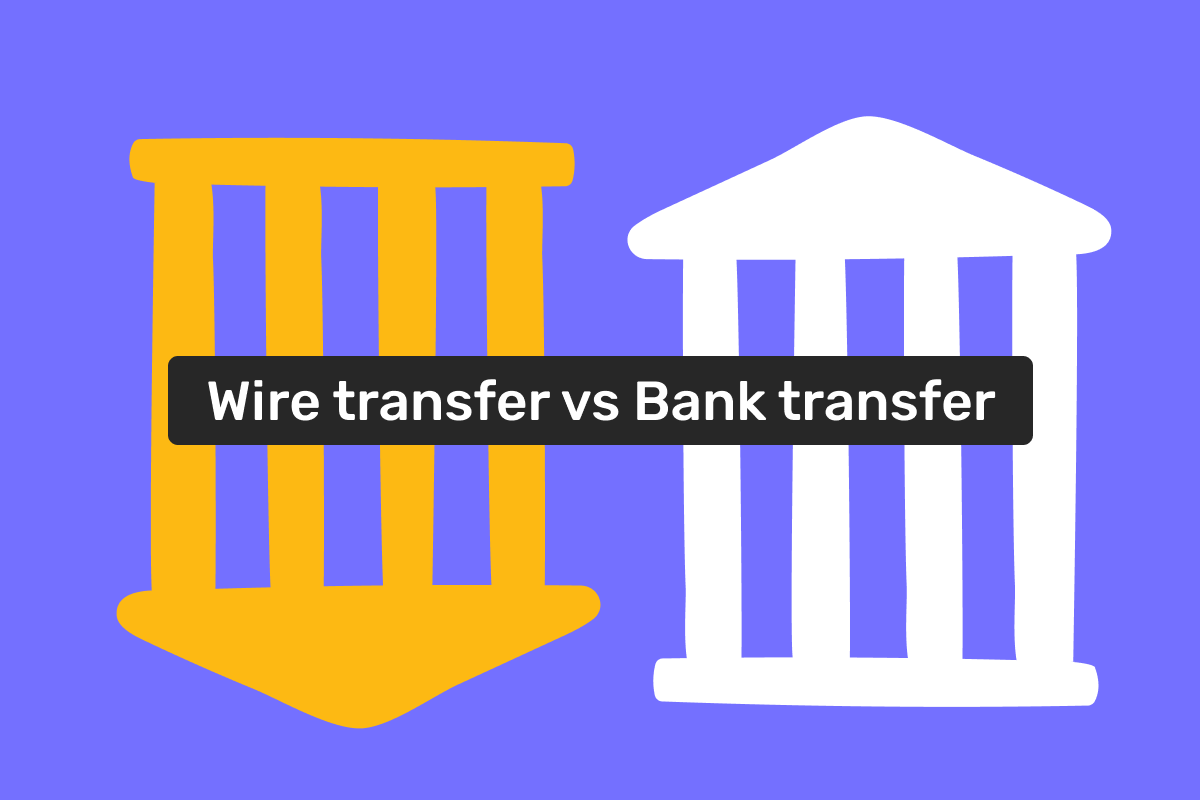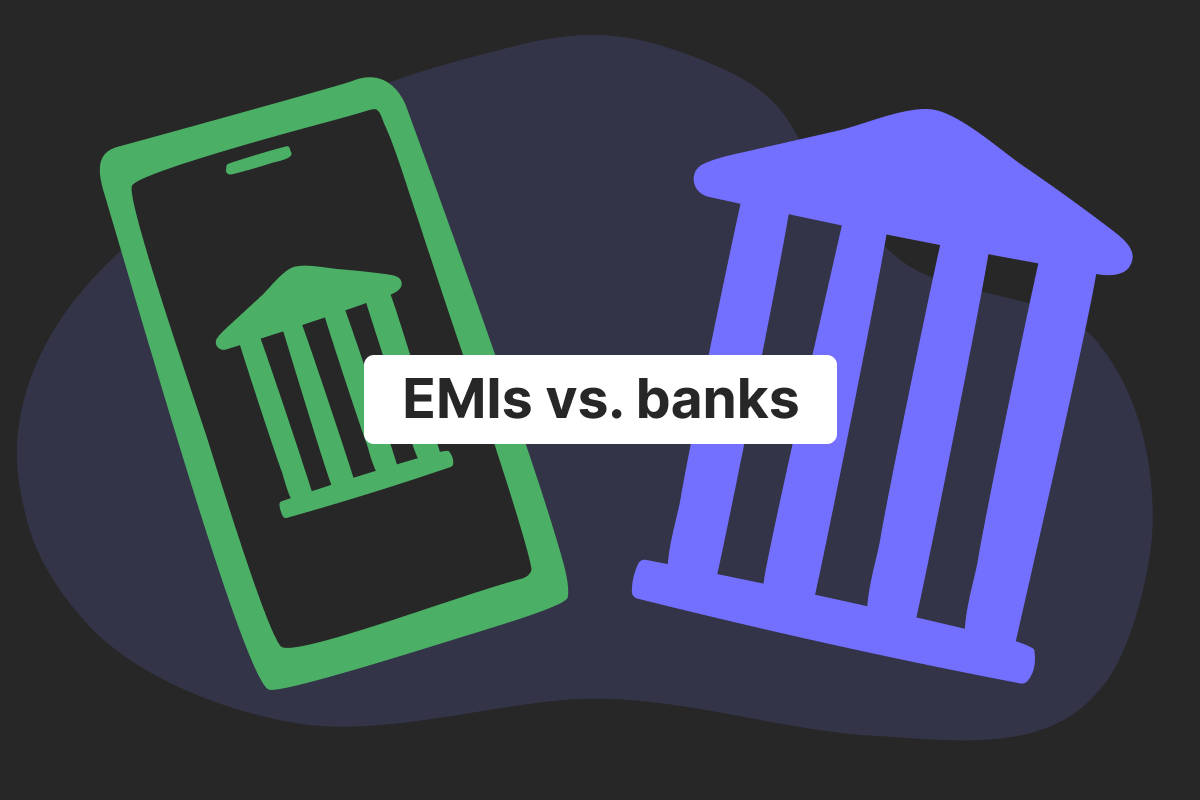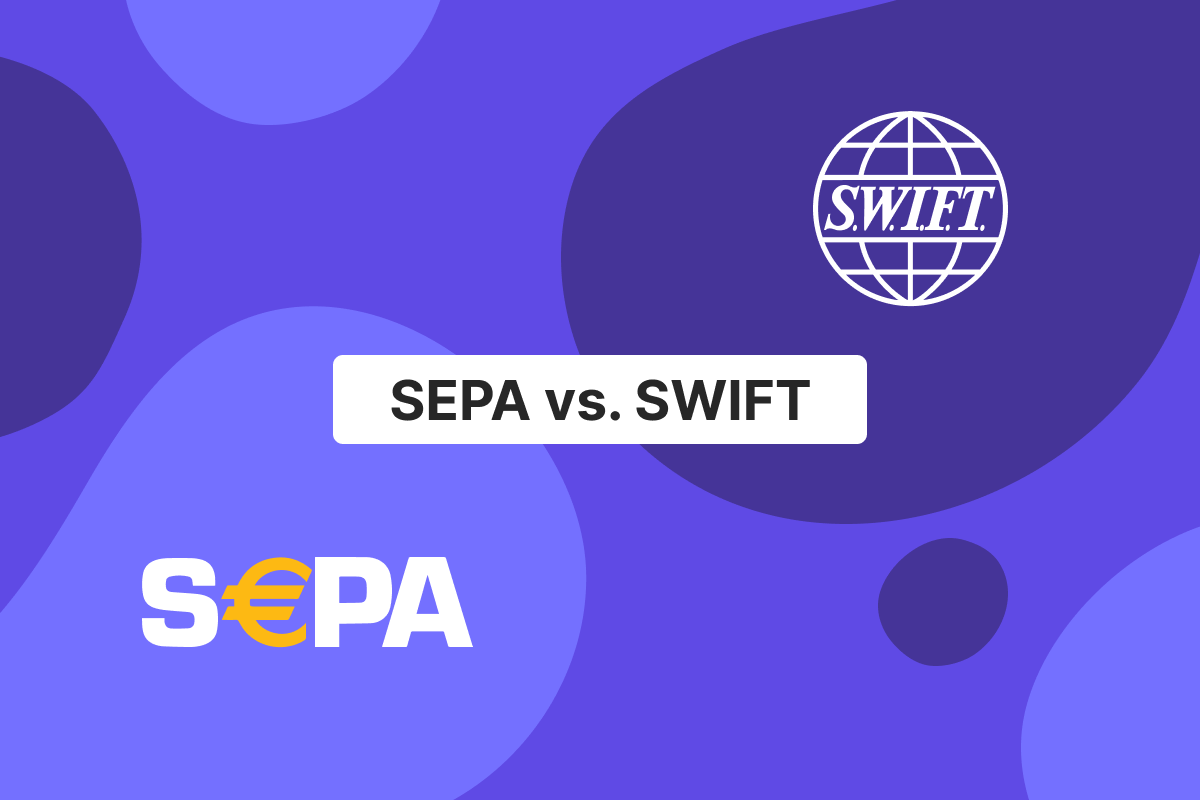The article was updated on 12.12.2024
To common users of banking services, money transfers are money transfers. As in, you don’t consider them complex – they are just tools for receiving and sending money.
But then, you face many terms like bank transfers, wire transfers, electronic payments, online transfers, etc. And you start to wonder – “Is there a difference between all of these?” and “What should I use?”. Well, let’s figure it out together!
In this article, Genome will primarily focus on bank transfers and wire transfers and how they differ when it comes to sending money.
What is a wire transfer?
Wire transfer is a type of electronic money transfer during which two financial institutions that represent the sender and the beneficiary exchange payment information about the funds’ recipient via the messaging network.
Note that the wire transfer term can also refer to payments made with the help of wire transfer agencies like Western Union and such. You can find out more about these agencies here, but we won’t discuss them in this article anymore.
How does a wire transfer work?
Wire transfers can be separated into two types: domestic (made within the same country) and international wire transfers.
Domestic wire transfers are payments made between two financial institutions located within one country. Many countries have their version of domestic wire transfers, and such payments are quick – the beneficiary will usually receive funds the same business day they were sent.
International transfers are a bit more complicated. As you might have guessed, an international wire transfer occurs between the sender and beneficiary, which are situated in two different countries. Most commonly, such wire transfers are carried out using the SWIFT network. SWIFT stands for the Society for Worldwide Interbank Financial Telecommunication and is used for international payments in over 200 countries and territories.
So, what kind of information is required to send a domestic wire transfer to the recipient’s account:
Full name and address of the account holder;
Recipient’s account number, routing number;
Transfer amount and transfer purposes.
Some additional steps may be required when sending a high-volume transaction, as your bank might request more information.
If you are dealing with international wire transfers, you need to add SWIFT and IBAN codes. IBAN is an international bank account number, and SWIFT is the bank destination number (a unique identifier for the receiver’s bank).
What is a bank transfer?
As the name suggests, bank transfers are a process of sending funds from one bank account to the other. Such payments can be made between both individuals and companies.
Bank transfer is sometimes used as a common term for any payment involving banks (yes, even wire transfers). But, in this article, we focus specifically on bank-to-bank payments, not transfers, with 2 banks involved.
Thus, you usually encounter this type of bank transfer when you send money to another account that is within your bank network.
How does a bank transfer work?
Domestic bank transfers are more prevalent, but international payments are also possible if your bank has branches in different countries. As expected, the first option is very cheap – some payment providers even allow making domestic bank transfers for free. The payment usually reaches the beneficiary in hours or one business day.
International bank transfers, on the other hand, can take a bit longer to reach the bank branch. Also, banks can apply some additional fees to international transactions, such as foreign currency exchange.
To send a bank transfer, you will usually need the same information as you do for wire ones. These are the full name and address of the recipient, their bank information, plus the SWIFT code and IBAN if the international payment method is used.
Open an account
in Genome online
Key differences between wire transfers and bank transfers
Now, it is time to examine bank account transfers vs. wire transfers. Remember, some people consider wire transfers and bank transfers to be the same. But here, we will compare the two based on the information we presented prior in the article.
Speed of transactions
In both cases, the time that the funds transfer reaches the beneficiary from the sender’s bank can vary drastically. Domestic wire and bank transfers can be pretty quick, taking a couple of hours or arriving on the same business day. Still, it depends on the local payment schemes used.
As for international wire transfers, they can take from a few business days to a week to reach the beneficiary from the sender’s account, depending on the destination country. Generally, multiple banks and payment service providers post the approximate execution time of wire and bank transfers on their websites.
Cost and fees
Domestic wire transfers are cheap, sometimes free. However, international payments can be expensive (especially via the SWIFT network) because of foreign exchange rates and the number of intermediary banks involved, which can cost as much as 25-30 euros.
As for bank transfers, these are usually pretty cheap, especially local options. Some bank transfers are even free of charge. It is always better to compare fees and be aware of the processing fee before transferring money.
Security measures
Wire transfers use encryption protocols, multi-factor authentication, fraud detection algorithms, and compliance checks, but so are bank transfers.
Also, international systems like SWIFT or SEPA add another layer of protection when making an electronic transfer to the recipient’s bank.
So, if wire transfers are so well protected, why is a bank transfer sometimes considered more secure? Because bank transfers may be reversed, unlike wire ones. Wire transfers, once processed, are usually final, which makes them less flexible but also riskier in case of fraud or mistakes.
Using Genome for secure transfers
Need to transfer money both domestically and internationally? Genome can help! We offer a seamless transfer process via SEPA, with both regular and instant transfer options available for all our clients. You can use SEPA for local transfers or send euro payments to any country within the SEPA zone.
Business wallet users also gain access to our international transfers, including SWIFT payments in different currencies to over 40 countries!
Also, why have one bank account if you can get multiple? You can start multi-currency accounts within your personal and business wallets in USD, GBP, EUR, PLN, CHF, JPY, CAD, CZK, HUF, SEK, and AUD. To complete your exceptional payment experience, you can order physical and virtual Visa cards and link them to your accounts in EUR, USD, GBP, PLN, CHF, CZK, HUF, and SEK!
Open an account
in Genome online
Choosing between wire transfers and bank transfers
Wire transfers and bank transfers can benefit both individuals and businesses.
Moreover, having both money transfer options within one bank becomes more common. Here are some criteria to look into when using online banking to send and receive money.
Speed. Wire transfers typically offer the fastest transfer speeds available, domestically or abroad, with funds usually available the next business day or even the same day in many cases.
Meanwhile, electronic funds transfers via banks can take longer, up to 3 days, but most transfers reach the recipient’s bank within 24 hours.
Cost and limits. Local bank transfers are reliable and simple, which is why it is the cheapest option.
Wire transfer costs vary depending on the type of transfer. International transfers will cost much more due to currency conversion fees and other bank fees. Also, it may be unusual, but wire transfer has a fee for receiving funds. Also, some payments might have higher transfer limits, so always check the maximum amount you can send.
Security. Bank transfers are considered a safer payment option for senders because if money is sent by mistake or if fraud has taken place, there are ways to reverse the payment.
Use cases. A bank transfer is often used for direct transfers in small or medium amounts, paying bills, transferring between personal accounts, receiving paychecks, or even fundraising.
Wire transfer is more about large or frequent transactions, which is preferable for companies. A good example of this is global trade: frequent fund transfers between partner companies and export/import payments rely heavily on a wire transfer system.
Individuals can also use wire electronic transfers for this purpose: any big purchase like a car or a house can be proceeded through a wire transfer.
Conclusion
In conclusion, bank and wire transfers are convenient, cheap, and relatively inexpensive options for domestic payments. However, wire transfers will suit you more if you need to send money abroad. For instance, you can use SEPA transfers for cross-border payments within Europe. And businesses that use Genome can make international transfers to more than 40 countries!
Open an account
in Genome online
FAQs
Are wire transfers reversible?
No, they are not. The client can request a cancellation after sending money if the transfer hasn’t been fully processed. But usually, it doesn’t happen.
How long do bank transfers take on weekends?
Usually, they are not processed on weekends and holidays. In most cases, you should wait until the next business day for your bank.
Unless you are using SEPA Instant Transfers, which are processed every day and reach the beneficiary within seconds. The best part is that all Genome’s clients can access them.
Can I cancel a bank transfer after it’s initiated?
Yes, you have approximately 3 business days to do it (this can also depend on local regulations and your bank’s policies). However, real-time payments (that occur instantaneously) are usually irreversible.
What is the maximum amount I can send via a wire transfer?
Financial institutions and jurisdictions regulate such limits, and the amount can vary between banks. Your financial institution can also request evidence of the source of funds and information about the recipient, including proof of ID if the payment amount is high.
Do both wire and bank transfers have tracking options?
Yes, and you should use it. This information is usually visible within clients’ bank accounts. Generally, it allows you to check the transfer status and all payment details after sending money.
Are wire transfers available 24/7?
It depends on the financial institution. In theory, yes, they are available 24/7; in reality, there are some small windows due to technical maintenance, usually at night. Note that the processing time depends on the systems and operating hours of intermediary banks and other financial institutions. However, wire transfers are usually more accessible than traditional bank transfers, which occur only during working hours on business days.






